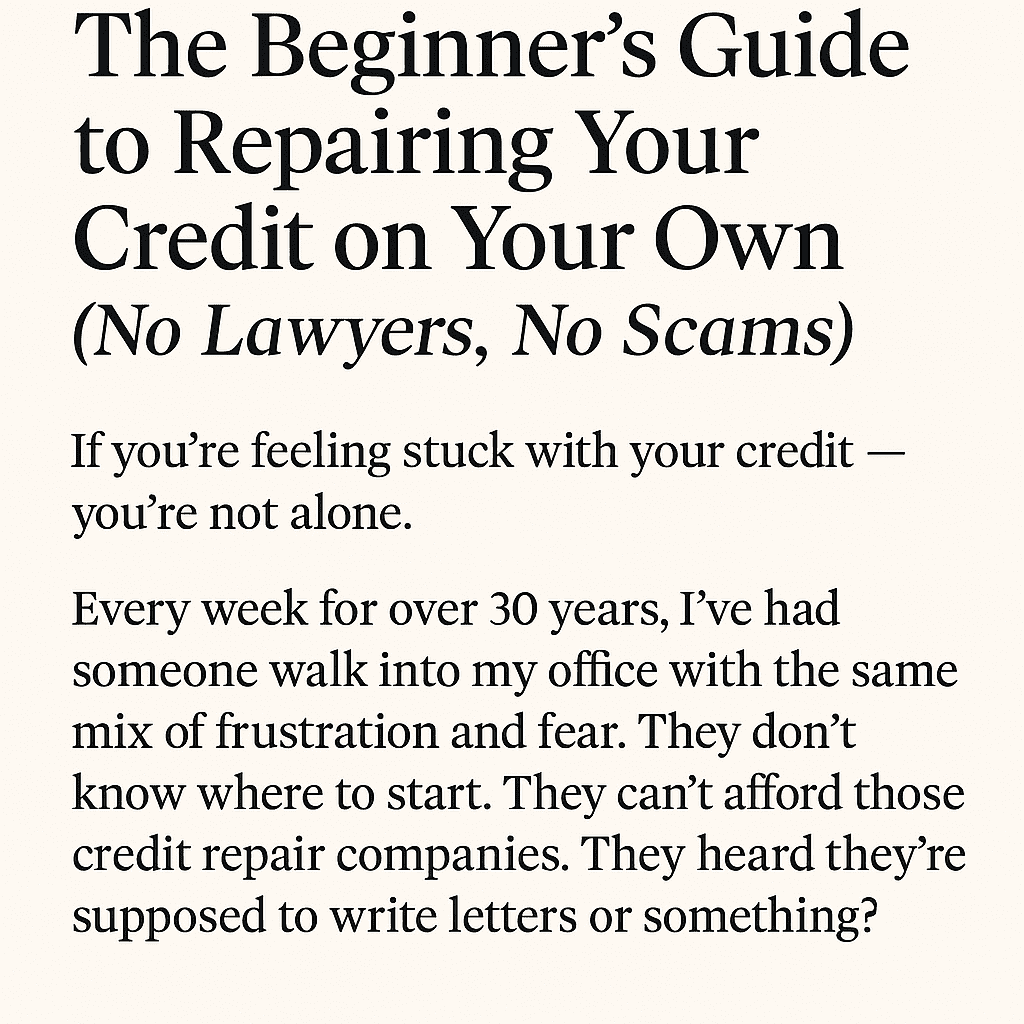The Beginner’s Guide to Repairing Your Credit on Your Own
If you’re feeling stuck with your credit — you’re not alone.
Every week for over 30 years, I’ve had someone walk into my office with the same mix of frustration and fear.
“I don’t know where to start.”
“I can’t afford those credit repair companies.”
“I heard I’m supposed to write letters or something?”
Let me tell you something I’ve told countless people over the years:
You don’t need a law firm. You don’t need $99/month. You just need a plan — and a little persistence.
Here’s where you start.
Step 1: Know Where You Stand
Visit AnnualCreditReport.com and get your free credit reports from Equifax, Experian, and TransUnion.
Print them out. Go old school.
Then sit down and go through every line like you’re reviewing your own bank statement.
- Is this loan really mine?
- Was this credit card late?
- Who sent this to collections?
You’ll be surprised how many people find errors. I once had a client who found someone else’s utility bill from another state on her report.
That one dispute raised her score by 40 points.
Step 2: List What’s Hurting You
Once you’ve read the report, list your problem areas:
- Missed payments
- Collections
- High utilization
- Errors
- No credit history
Knowing what to fix makes the rest 10x easier.
Step 3: Dispute What’s Wrong (For Free)
If you find something inaccurate or outdated, dispute it — for free.
You can write directly to the credit bureaus or use their online systems (I recommend written letters for tracking).
Keep it simple:
- State the issue
- Include evidence if you have it
- Request removal or correction
Send it by certified mail, and always keep a copy.
No fancy legal talk needed.
I’ve had clients get negative items removed with a two-paragraph handwritten letter.
Step 4: Fix What’s True
Okay, not everything will be wrong. Some of that debt might be yours. That’s okay. It just means you now have two jobs:
- Prevent further damage (no more missed payments, keep usage low)
- Show positive behavior (pay on time, keep cards open, don’t apply for too much new credit)
Credit is like trust. You don’t need to be perfect — just consistent.
Step 5: Build Forward — Not Just Backward
Don’t just clean up the past — build the future.
Consider:
- A secured credit card (if your score is low)
- A credit builder loan (offered by some banks and credit unions)
- Becoming an authorized user on someone else’s healthy card (with their permission, of course)
I’ve seen people add 80–100 points in 12 months with nothing more than smart, small steps.
Real Talk Before You Go
Here’s the truth: credit repair companies want you to think it’s complicated so you’ll pay them.
But most of what they do, you can do yourself.
You just need:
- A clear strategy
- The right letters
- Patience
You might not see results in a week. But give it 3–6 months — and keep your momentum — and you’ll feel the shift.
And if you need help understanding a part of it, come back here. That’s why I built this place.
You don’t need to be perfect.
You just need to start.
